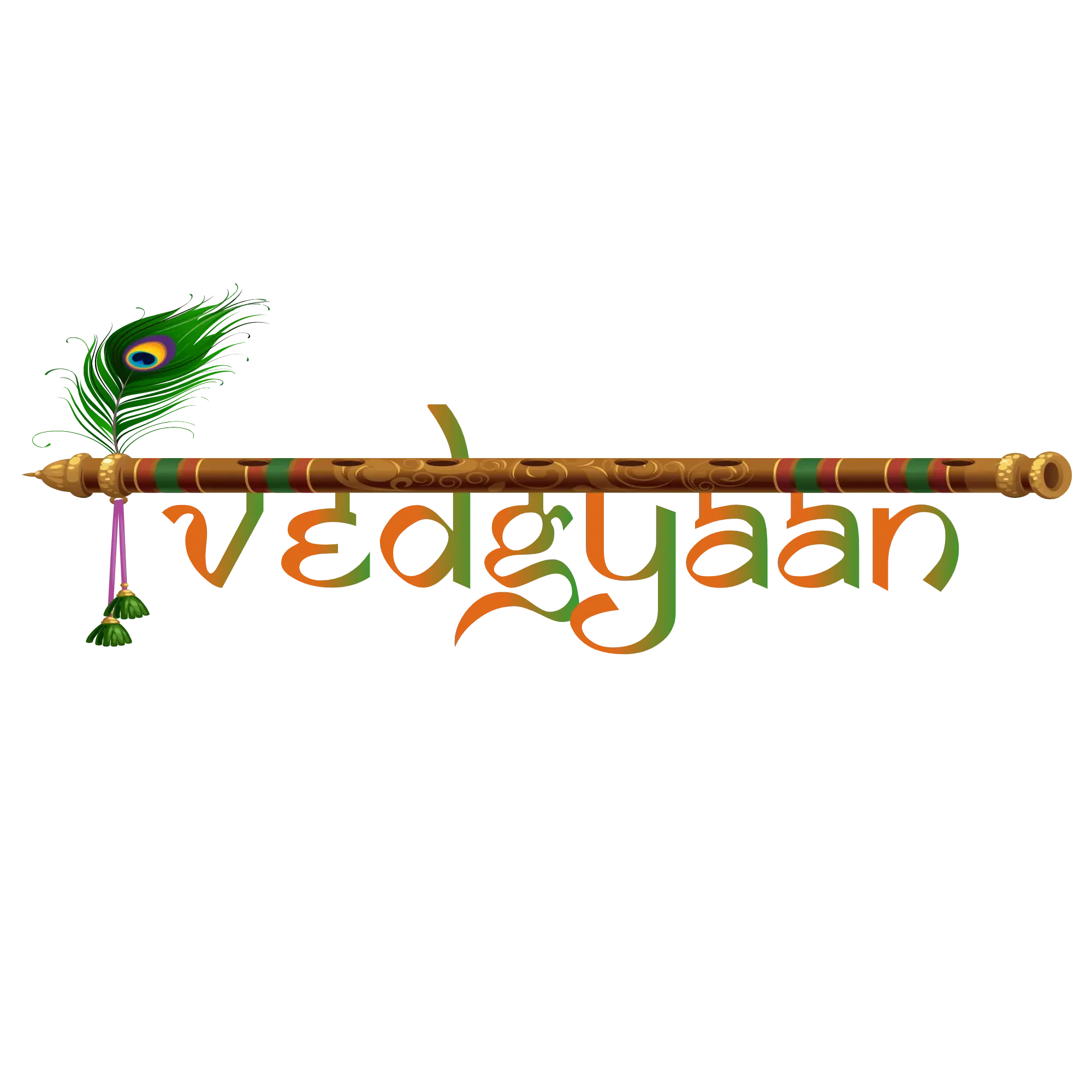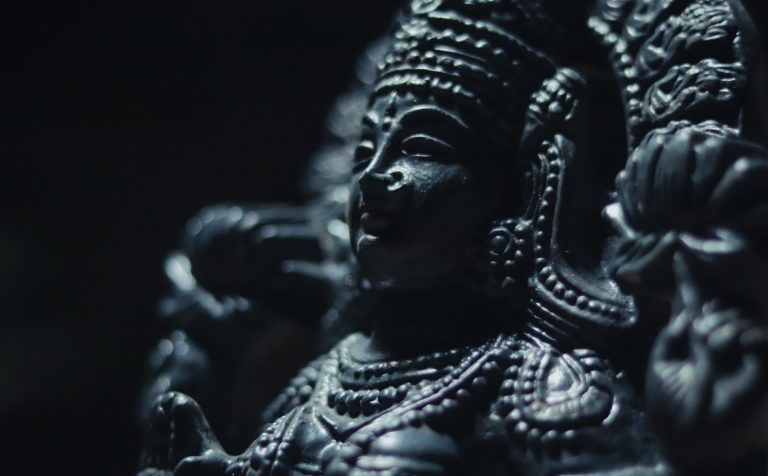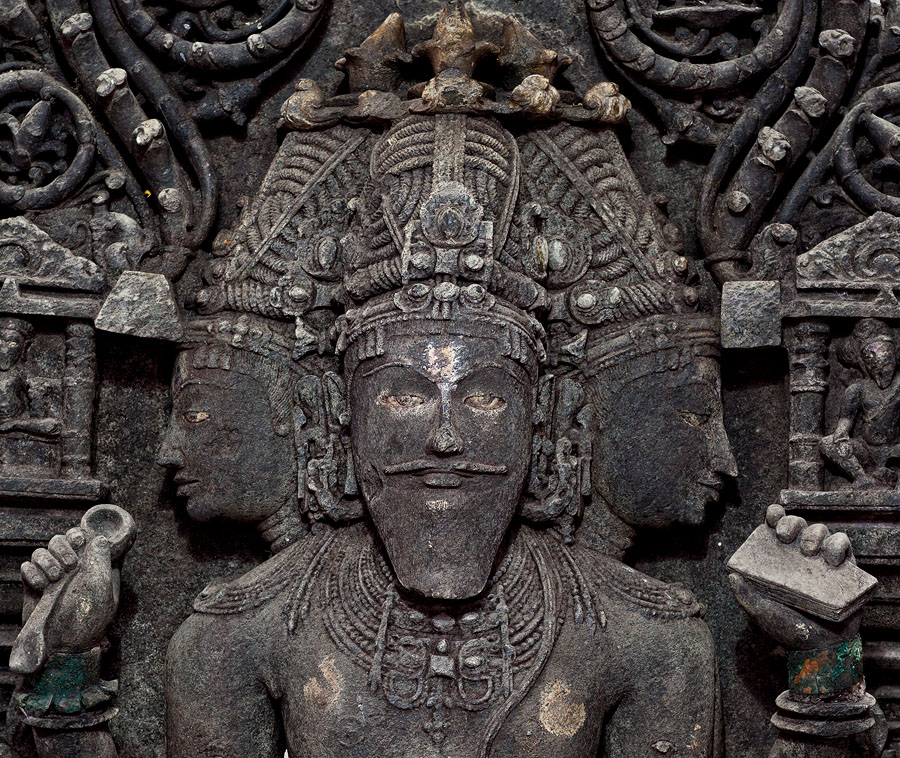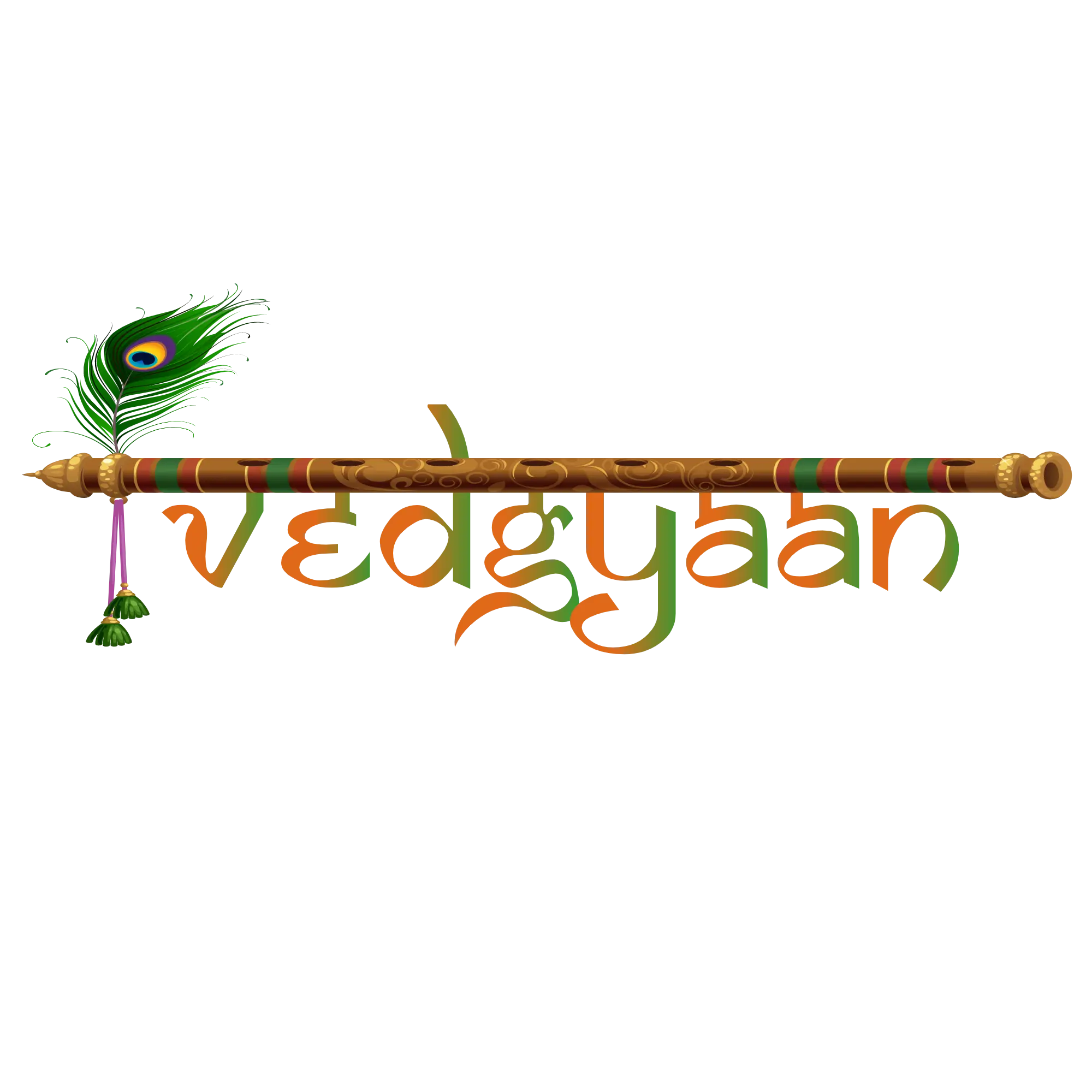The building blocks of Hinduism, The grand design of the Universe, the evergreen and eternal cycle of life, Yugas are the essence of time and space as we know it. The devolution of life, the development of society, the quality of life, and the divine presence of the universe and Brahman (the supreme power or force that governs the universe) are determined by the Yuga and the Bull of Dharma. A display of the decline of humanity’s greatest values, one must strive to stay on the path of righteousness to return to the Yuga of peace and harmony.

(Public Domain)
What is Yuga?
Yuga (Sanskrit: Age) is a period of time in Hinduism and signifies the cycle of four world ages or the four phases of the universe – Satya Yuga, Treta Yuga, Dvapara Yuga, and Kali Yuga.
An epoch in Hinduism ( Hindu unit of time), Yuga stretches over 4,320,000 years and repeats itself four times. The four Yugas of time are symbolic of the creation cycle of the universe – the continuous system of the creation, destruction, and recreation of the universe.
It is believed that while Brahma creates the universe, full of life and righteousness, Shiva destroys the Universe when it has reached the stage of renewal. With each Yuga, the ethics, virtues, and physical condition of humanity deteriorates. The practice of Dharmic values and morals continues to decline until humanity is at its worst – when Shiva will destroy the universe to pave the way for a new, Dharmic universe.
Presently, humanity is in the Kali Yuga, the last and final stage of the Yuga. It is believed that at the end of the Kali Yuga, this world will be destroyed and the new Satya Yuga age will start again.
It is believed that there are 1000 Yuga Cycles in a Kalpa (Day of Brahma)- the period between the creation and recreation of the universe – and 71 Yuga cycles in a Manavantra (Day of Man)- the period between the life and death of humanity.
Origin of the word Yuga
The word Yuga has its roots in the ancient Vedic scripts and is derived from the Sanskrit word “Yug” which translates to “yoke”, “period”, or “a generation”.
It is believed that “Yuga” was first mentioned after the compilation of the four Vedas and has formed the foundation of all Hindu texts that have since followed.
The four Yugas or stages of life are said to have originated from the Indian game of “long dice”.
The Yugas are heavily described in the great Indian epics – The Ramayana and The Mahabharata. In the Mahabharata, Lord Hanuman explained the four Yugas in detail to Bhima, who had encountered him in the forest.
Lord Hanuman expressed, “Dharma has no decay, There were no Gods, Demons, Gandharva, Yakshas, Rakshasha, and Serpents. There was no buying or selling. The sounds of the Vedas did not exist, nor did rites or manual labor. The only dharma is Sanyasa. No disease existed, and neither did the decay of the senses. All the Varnas followed just one dharma.”
Similarly, he spoke of the Treta Yuga, “people were addicted to truth and followed the dharma of rituals. Sacrifices were introduced and many rituals were practiced. These were introduced for the sake of the fruits they will bring. People performed deeds according to their dharma and dharma decayed by a quarter”
Of the Dvapara Yuga, “the dharma decayed by half, many more rituals were added and so Veda was divided into many parts. People started to deviate from the path of truth. Disease and decay started entering society. There are many natural disasters. Being affected by such things some people started practicing austerities. Others perform deeds with a motivation to attain heaven.”
And finally, of Kali Yuga, “only a quarter of the Dharma remains. The rituals of the Vedas, and the sacrifices start falling into disuse. There is excessive rain, diseases, sin, and vices. There are many natural calamities. There are ailments and illnesses. Even the tasks performed in the name of dharma lead to perverse outcomes.”
Yugas in Hinduism
The essence of time in Hinduism and the system of the Universe, The Yugas are revered as the critical four “stages of life”, ever-changing along with the world. Hinduism closely intertwines Yugas with the celestial “Bull of Dharma”, who stands on one less leg with each passing Yuga – symbolic of the steady decline of righteousness by one-quarter of every stage.
Each Yuga is defined by the type and quality of human values and emotions displayed during it. The Satya Yuga is physically represented as a simple man carrying an earthen pot, The Treta Yuga is represented by a man with a cow and arrow, The Dvapara Yuga by a man carrying an axe and the Kali Yuga by a naked man.
These physical representations are symbolic of the values developed during a particular Yuga – the man carrying a pot is symbolic of the simple nature of the Satya Yuga, the development of simple skills such as pottery and gathering.
The cow in the representation of the Treta Yuga is symbolic of the development of technology and agriculture. The bow is representative of the beginning of wars and battles.
The Dvapara Yuga is marked by the symbol of an axe, symbolizing the advent of sophisticated and lethal weapons that escalated the destructive nature of war.
The Kali Yuga is represented by a naked man, showcasing how humanity has strayed from the principles of Dharma and morality. This serves as a sobering reminder of the decline of human values and civilization.
Timelines Of Yugas in Hinduism
The four Yugas begin with the Satya Yuga, the purest and most Dharmic Yuga. With the passage of each Yuga, the duration and the quality of humanity decrease by 25%, forming the ratio of 4:3:2:1.
Each Yuga consists of 3 stages – Yuga-Sandhya (Dawn or the Beginning), Yuga-Proper (The main period of the Yuga), and Yuga Sandhya Meka (The Dusk or the End).
- The Satya Yuga lasts for 1,728,000 human years
- The Treta Yuga lasts for 1,296,000 human years
- The Dvapara Yuga lasts for 864,000 human years
- The Kali Yuga lasts for 432,000 human years

Satya Yuga (The First stage of life)
The Satya Yuga or the Age of Truth was considered to be the “Golden Age” in Hinduism when Dharmic values and humanity were at their peak. It was believed that during the Satya Yuga, the Bull of Dharma stood his ground firmly.
Considered to be the age of perfection, The Satya Yuga saw the best of humanity – moral, virtuous, and best of all, no crime. Humans lived in peace and harmony as a single unit, brimming with strength, youthfulness, and vigor. Not an ounce of hatred or evil existed during this age.
Religion is practiced with deep devotion and genuine intentions as the presence of Brahman was felt all around the world. Meditation is held with the highest regard and people communicate their deep, innermost, and spiritual thoughts with each other without any hesitation.
In addition, The Satya Yuga was the Yuga during which the earth was flourishing, and abundant in resources, eliminating the need for agriculture and mining. The environment was thriving, animals lived amongst humans as kin, and virtue was held supreme.
Spanning over 1,728,000 years, the Satya Yuga saw humans with a lifespan of over 100,000 years and towering heights of 33 feet.
Treta Yuga (The second stage of life)
The third stage or Yuga, The Treta Yuga was the beginning of the steady decline of virtue and the introduction of Adharma (unrighteousness). As the world moved from the Satya Yuga to the Treta Yuga, a quarter of the virtue diminished, paving the way for unrighteousness. It was also the age that the great battle of Lanka was fought between Lord Rama of Ayodhya and the demon King Ravana.
The Treta Yuga was popularly known as the “Mental Age”, during which psychic powers and intelligence were harnessed to develop society and the world. In the age of development, Religion lost the significance that it had possessed in the Satya Yuga.
Soon, Humans began to wage war with one another, in a bid to steal land and personal possessions. Emperors rose to the ranks by conquering people and establishing dictatorships. The weather began to change from ever-pleasant to occasional storms and droughts. The resources of the earth began to diminish – giving birth to mining and agriculture.
At the dawn of a new age of trouble and war, the Treta Yuga saw humans that had an average lifespan of 10,000 years and heights of 22 feet.
Dvapara Yuga (The third stage of life)
In the second age, Dvapara Yuga saw the diminishing of one more quarter of virtue, replacing it with two-quarters of sin. By this stage, The Bull of Dharma is said to be standing only on two legs.
The Dvapara Yuga saw a decline in the quality of humanity, with disease, weakness, and poverty becoming rampant. Physical aspects such as strength and stature are reduced, with Humans becoming discontent and harming other humans. Crime became widespread, fueled by Adharmic thoughts and emotions such as jealousy, anger, greed, or lust.
Due to the unholy material desires of the humans of this age and the evil it gave rise to, their average lifespan dropped by thousands of years. The humans in the Dvapara Yuga had an average lifespan of 1000 years, with a statue of 11 feet.
However, the Dvapara Yuga saw a few positive elements – the events of the Mahabharata and the birth of Lord Krishna occurred during this age. Lord Krishna restored Dharma on earth by guiding the Pandavas during the great battle of Kurukshetra. The Dvapara Yuga was also the age of the Bhagavad Gita – one of the most sacred texts in Hinduism.
Kali Yuga (The fourth and last stage of life)
The present and final Yuga of the current Universe, the Kali Yuga is the age of death, ignorance, and darkness. Adharma has taken over Dharma, as it accounts for 3 quarters of life during the Kali Yuga. The bull of Dharma is now said to be standing on only one leg.
Kali Yuga Predictions
Humans in the Kali Yuga are a far cry from their inherently great and powerful ancestors from the Satya Yuga – filled with Adharmic thoughts and emotions. Jealousy, Anger, Greed, and lust take priority over virtue and Humans begin to lie and harm others. Humanity has strayed away from all that is divine and righteous.
Divine intellect ceases to exist and religion and spirituality are given the back seat. Humans become disinterested in knowledge and the ancient scriptures and instead engage in undesirable activities such as consuming toxic substances and actively harming the earth.
The earth begins to actively decline – with polluted skies and oceans, endangered and extinct animals, disease and poverty, death and destruction. The family unit becomes diminished and family is no longer a priority. The average life span will fall to just 100 years with a stature of 5 feet 5 inches.
In the Bhagavad Gita, Lord Krishna teaches the Pandavas about the Kali Yuga looming near,
“The world loses all its righteousness; people are corrupt and perform evil daily. Diseases and afflictions plague every human. No one knows the Vedas in their entirety and their true essence. People fight over petty things like religion and land. Even hard work refuses to pay good results and people who perform bad deeds sit on the top of the societal ladder.”
When will the Kali Yuga end?
Kali Yuga began in 3102 BCE with the end of the Mahabharata and Kali Yuga cycle will last for 432,000 human years as per Hinduism Sacred Texts which means Kali Yuga will End in the Year 428898 AD.
What Happens at the end of Kali Yuga?
The Ancient Hindu Sacred Text ‘Vishnu Purana’ states that at the end of Kaliyuga when evil and decadence of the Kali Yuga reaches its zenith, a dreadful drought will occur that will last 100’s years, and all the waters will dry up. The Sun will change into seven Suns, and Bhurloka (Earth) will be full of Adharmi (Who don’t Follow Dharma) people, that’s when Lord Vishnu will have an incarnation as Kalki the horse rider, to kill all the evil people and restore Dharma on earth, commencing a new Satya Yuga.
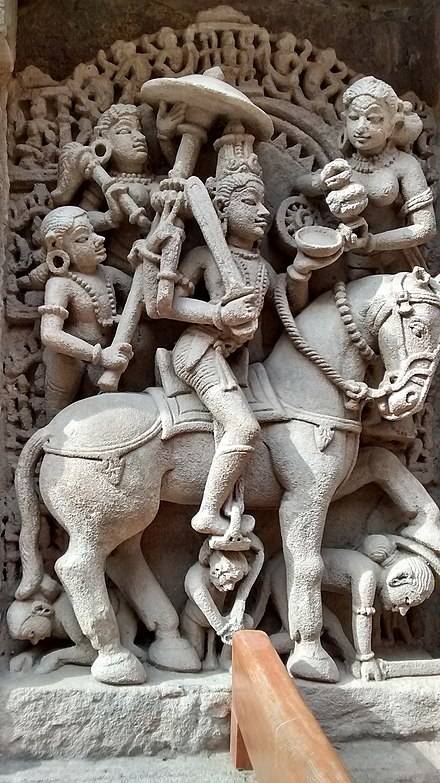
(Public Domain)
Manvantara and Kalpa
While Yugas are smaller cycles of life, they belong to the larger cycles of the Universe known as Manvantara and Kalpa. A certain number of Yugas make up a Manvantara or a Kalpa.
Manvantara refers to the “age of Man” and is named after Manu, the very first mortal man and father of all humankind. It marks the period from the beginning of humankind to its ultimate end. Manvantara consists of 71 Yuga cycles, which is approximately 306,720,000 years.
14 Manvantaras form an even larger cycle known as “Kalpa”. A Kalpa refers to a Brahma day or a single day for Lord Brahma. It lasts for approximately 4,294,080,000 years. Each Kalpa is followed by a Pralaya (Night) of the same length, during which there is nothingness.
According to the Bhagavad Gita,
sahasra-yuga-paryantam
ahar yad brahmaṇo viduḥ
rātriṁ yuga-sahasrāntāṁ
te ‘ho-rātra-vido janāḥ
This translates to, “By human calculation, a thousand ages taken together is the duration of Brahmā’s one day. And such also is the duration of his night”.
100,360 Kalpas form a Maha-Kalpa, which refers to the complete life of Lord Brahma. This is approximately 72,000,000 Yuga Cycles and lasts for 311 trillion years. The Maha-Kalpa is followed by a Maha-Pralaya- a period of dissolution that lasts the same amount of time.
Presently, the world is halfway through a Maha-Kalpa. This is the first Kalpa, the seventh Manvantara, and the Kali Yuga.
Conclusion
As we move forwards through the Kali Yuga, it is important to remember the events of the previous ages and learn from them. As we move through the age of ignorance, Divine Knowledge becomes of utmost significance, and forming a close bond with our Atman (soul) to Brahman (supreme force of the Universe) becomes of utmost importance.
